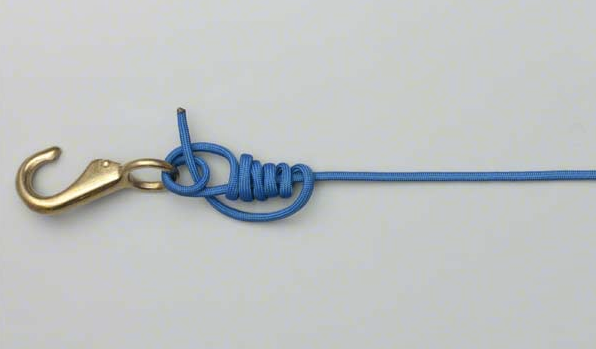
7 Fishing Knots You Need To Know
|
|
Time to read 2 min
|
|
Time to read 2 min
As anglers, we spend hours reading about the right rods, reels, line, and presentations necessary to catch more and bigger fish. We ruminate over the best way to dissect a piece of cover or better understand what our electronics are telling us.
We’re even amateur meteorologists, and pay close attention to prevailing weather patterns. Lost in all this analysis is a detailed understanding of arguably the most crucial component of fishing success – a strong fishing knot.
The fishing knot you use to tie on your bait is critical. You can have the right setup, be in the right place, and get the big bite, but you won’t get the fish back to the boat if your knot fails.
To remedy that, we’ve put together the following list of 7 fishing knots that every angler should know, and an instructional video from AnimatedKnots.com to help you practice:
Called by many the “fisherman’s knot,” the improved clinch is a great all-purpose fishing knot that can be tied quickly and works for most low-impact and recreational presentations.
You can use this fihsing knot to tie on live-bait presentations, small lures and rigs for panfishing, and it’s also an easy one to teach kids. Although it’s not the strongest, it is a good choice for beginners and anglers just looking for a recreational escape.
One of the strongest and simplest knots to tie, the Palomar is a fishing knot that consistently ranks among the highest for knot strength and durability. It also works equally well with braid, monofilament, and fluorocarbon.
The downside to the Palomar fishing knot is that it’s ungainly for bigger hard baits, and if not wetted properly can cause the line to burn while cinching up. An excellent choice for most presentations.
The loop knot is ideal for any bait that needs to maximize freedom of motion. This is especially key for topwater poppers and walkers, as this fishing knot allows them to create their optimal surface commotion.
Snell knots were originally designed for live bait fishing, but in recent years have become the ideal knot for flipping and pitching. Because this fihsing knot attaches at the hook shank instead of the eye, the snell provides maximum rotation on the hook set and increases penetration on the hook set.
The Albright knot is the best choice for tying two lines together. Commonly used for securing a fluorocarbon leader to braided main line, the Albright slip is strong, and small enough to easily slide through rod guides. The downside of the Albright slip is that it can be difficult for beginners to tie.
An alternative to the Albright slip, the blood knot is also an excellent choice of fishing knot for securing a fluorocarbon leader to braid. It’s much easier to tie, and also maintains good knot strength. Make sure to wet both sides of the line before cinching to prevent line abrasion with this fishing knot.
The arbor knot is the best fishing knot choice for securing line to a reels spool. It is simple to tie and cinches quickly – minimizing annoying line slippage on a reels arbor.
